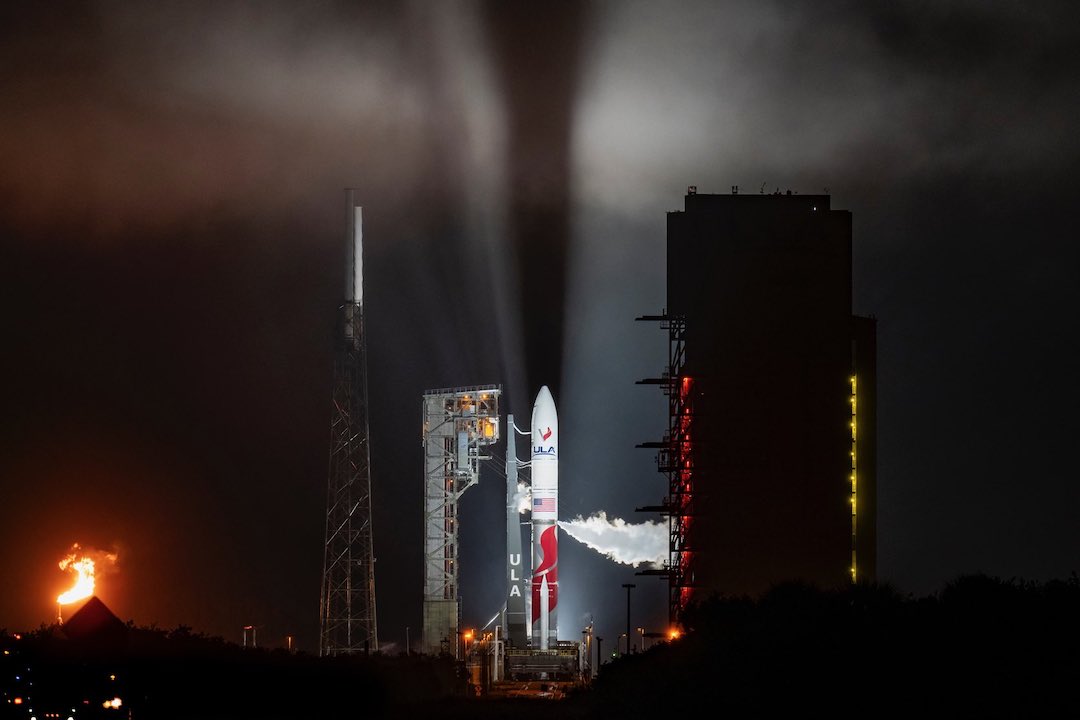Latest News

ULA conducted a wet dress rehearsal for the second Vulcan Centaur launch on Oct. 1. Photo: ULA
United Launch Alliance (ULA) is finalizing preparations for the second Vulcan mission, set to lift off early on Friday, Oct. 4. This is the second of two test flights required for ULA’s certification process to fly Vulcan missions for the U.S. Space Force, following the first successful mission in January.
The mission will not carry a customer payload, but will instead carry a dummy payload to imitate the mass of a payload. This flight was originally planned to carry the Sierra Space Dream Chaser spaceplane, but when the Dream Chaser was not ready to fly, ULA decided to move forward without a customer in order to fulfill its national security requirements.
Bruno told reporters on Wednesday that ULA waited for Dream Chaser to the point that it was too late to integrate other interested customers. ULA is fully funding the mission at a cost to the company in the “high tens of millions,” Bruno said.
“We’ve been a big supporter [of Dream Chaser] for a decade, we really want to fly it,” Bruno said. “Had we not had these very high priority, urgent national security space missions that were dependent on that Cert flight, we would have waited for them, but we just couldn’t.”
The launch window is Friday morning between 6:00 a.m. and 9:00 a.m. EDT. The Vulcan rocket completed a wet dress rehearsal on Tuesday and launch readiness review (LRR) on Wednesday.
With the dummy payload, the mission has a short flight profile of 34 minutes. ULA plans to perform a few maneuvers with the upper stage to collect more data about its performance.
Bruno said there is “urgency” to complete the second certification mission for the Space Force as ULA plans to launch two more Vulcan missions for the Space Force before the end of 2024 – USSF 106 and USSF 87.
After the mission, ULA will send data to the Space Force for its review process. “If the mission is very clean, like the Cert-1 mission, [review] goes pretty quickly,” Bruno said. “That’ll be done in weeks, not months.”
Ramping Up for 2025
The Space Force is not ULA’s only eager customer, ULA is also on deck to launch a host of missions for Project Kuiper, Amazon’s Low-Earth Orbit (LEO) constellation. The first Kuiper launch is now pushed back again until early 2025, Bruno said Wednesday. This is due to the timeline of the national security missions.
To meet demand, ULA is working to significantly increase its launch cadence in 2025 — targeting up to 20 missions next year. For comparison, ULA performed eight missions in 2022 and just three missions in 2023.
Bruno said roughly half the 2025 missions will be Atlas missions, and half will be Vulcan missions.
The capacity increase involves a significant infrastructure upgrade. ULA is currently building two new vehicle integration facilities to prepare the vehicles for launch at Cape Canaveral. Bruno said these are on track to be finished in the first or second quarter of next year. ULA is also converting an Atlas launch pad at Vandenberg Space Force Base in California to a Vulcan launch pad, and ordered a second ship to transport rockets to the launch sites.
Bruno said ULA spent in the ballpark of $5 billion to $7 billion on Vulcan development, and has spent more than $1 billion dollars on the infrastructure upgrades.
The company is closely tracking its build time and launch preparation time for the vehicles to make sure it can meet this increased launch rate in 2025. Bruno said the time to wet dress rehearsal for the second flight was around 50% faster than the first flight.
“This is a big deal. This is a big increase in launch rate for us, and there’s a lot of work to get done,” Bruno said. “It takes a lot of time and attention to detail and investment to do it, but I am confident that we will be able to build and fly the 20 missions that are slated for next year. As long as the spacecraft show up, I believe I’ll have the rockets to fly them.”
Bruno also addressed ULA’s attrition rate after a Bloomberg story in August reported work delays caused by qualified personnel leaving for its competitors.
“We’re not in any way in distress,” Bruno said. He explained that ULA closely tracks attrition by department. The company recently hired more than 100 people in Cape Canaveral as part of the ramp-up, and plans to soon hire around 100 more between Cape Canaveral and Vandenberg for its launch teams.
“We’re actually a little bit better than the rest of the industry is doing on attrition,” Bruno said, citing third party data. “We are able to backfill. We are not in any way suffering levels of attrition that make it difficult to do our work and maintain our critical skills.”
Get the latest Via Satellite news!
Subscribe Now